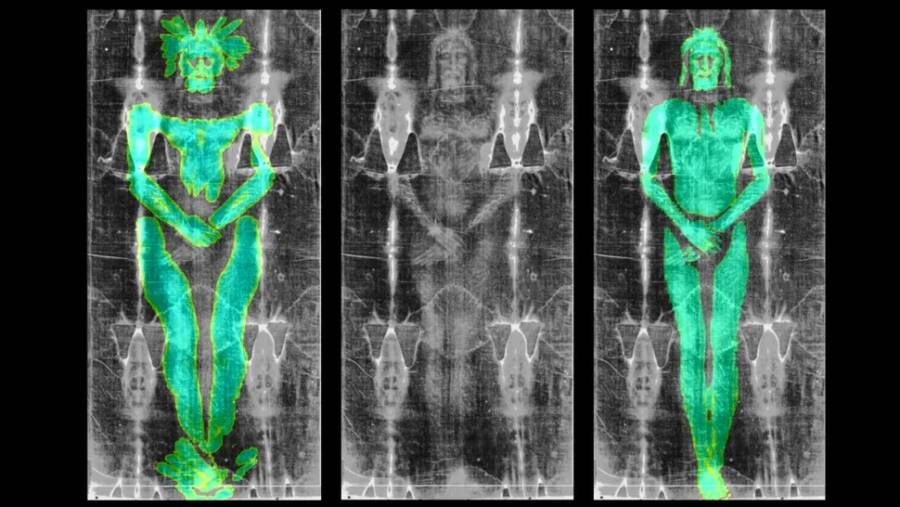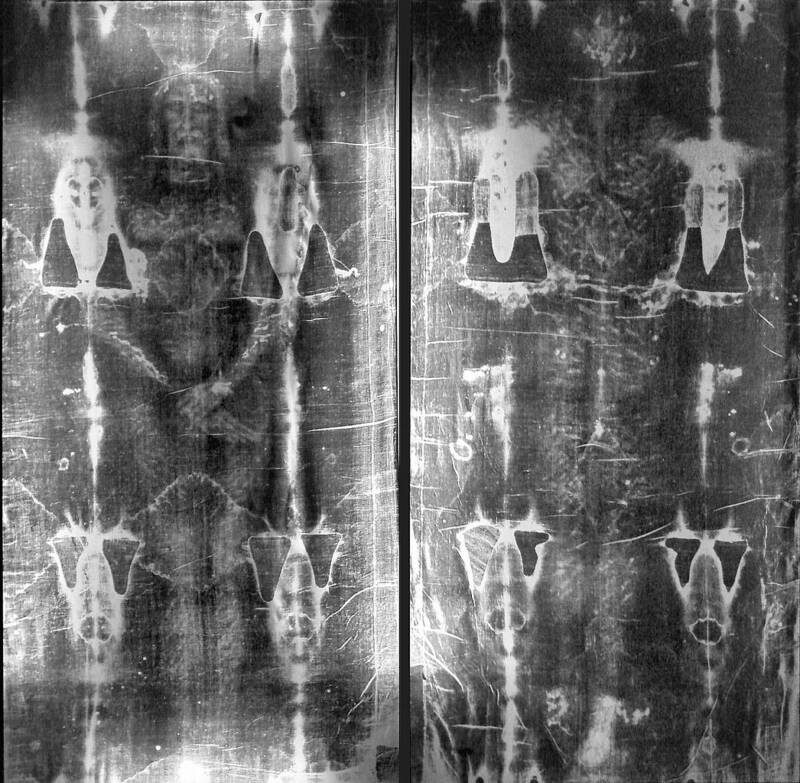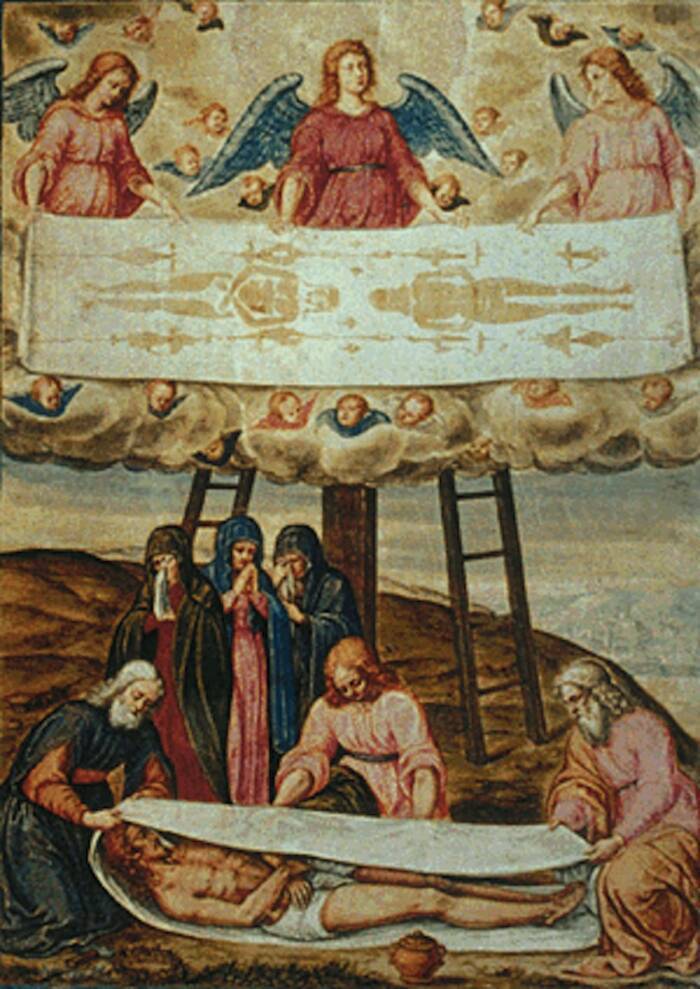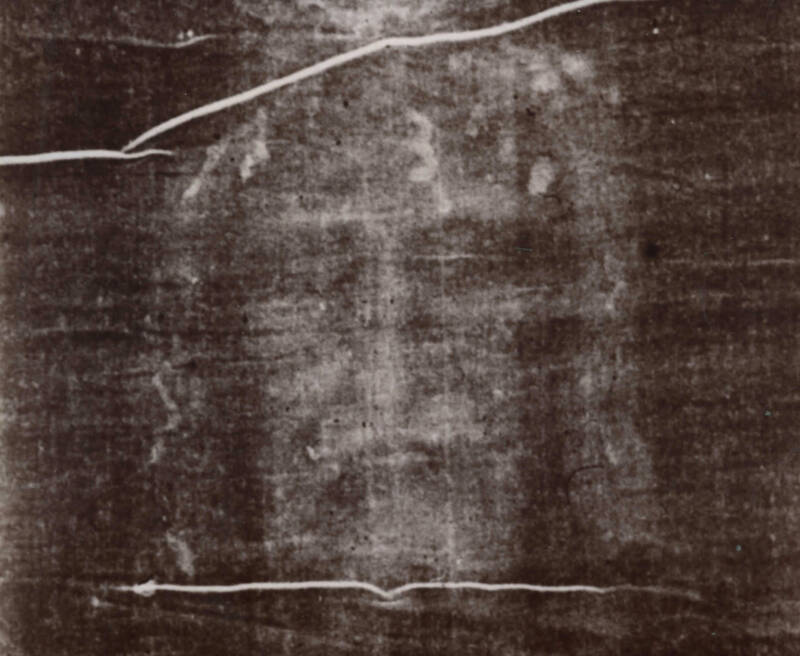A digital designer and graphics experts from Brazil named Cícero Moraes has used 3D modeling to produce new evidence about the Shroud Of Turin — proving that it could never have been draped over Jesus' body.

Cícero MoraesUsing 3D modeling, Cícero Moraes has proven that the Shroud of Turin was draped over a low-relief sculpture and not a human body.
New research has used 3D image analysis to suggest that the Shroud of Turin was likely not laid atop Jesus’ body, but only a sculpture instead.
For centuries, many have claimed that the Shroud of Turin was Jesus’ original burial covering. However, this new evidence about the Shroud of Turin shows that the image on the shroud could not have been made by a real human body, and was actually likely created by a low-relief sculpture.
Researcher Cícero Moraes used 3D modeling software to study how the fabric would have fallen over a human body versus a sculpture to make his conclusions. Moreover, those conclusions support the theory that the shroud was created in medieval times as a piece of religious artwork and is not an actual Biblical artifact.
New Evidence About The Shroud Of Turin Is Revealed By 3D Modeling

Wikimedia CommonsThough it appears to be imprinted with the image of a man who resembles the traditional depictions of Jesus and who has injuries consistent with those described in the crucifixion, modern researchers largely regard the Shroud of Turin as a medieval fabrication.
Arguments over the Shroud of Turin’s legitimacy have been happening since its first recorded appearances in the 14th century. Now, new research adds to this centuries-long debate, concluding that the shroud could not have been placed atop a human body and thus could not have been part of Jesus’ burial after the crucifixion at Golgotha following his condemnation by Pontius Pilate.
A new study published in the journal Archaeometry has found the Shroud of Turin, which features the faint image of a man with markings from a crucifixion, was likely created using a low-relief sculpture. The researcher used modeling software to analyze how the cloth fell over both the sculpture of a body and a real human body.
“The image on the Shroud of Turin is more consistent with a low-relief matrix,” Cícero Moraes, the 3D designer who specializes in historical facial reconstructions and was the author of this new study, told Live Science. “Such a matrix could have been made of wood, stone or metal and pigmented (or even heated) only in the areas of contact, producing the observed pattern.”
Moraes created two different 3D models: one of a human body and one of a low-relief sculpture of a human body, or a sculpture in which the design is raised only slightly from its base. He then virtually draped the cloth over the impressions to compare the images with photos of the shroud from 1931.
He found that the images of the cloth over the sculpture matched the photographs. Meanwhile, the images of the cloth over the human body tended to get distorted in ways that don’t match the photos.
Inside The Controversial History Of The Shroud Of Turin And The Debate About Whether It’s Real

Wikimedia CommonsArtist’s depiction of Jesus’ body being wrapped in a cloth after the crucifixion.
Controversy regarding the age and origin of the Shroud of Turin has been unfolding since the 14th century. However, carbon dating conducted in 1989 found that the shroud was created sometime between 1260 to 1390.
This discovery has further solidified the interpretation that the shroud is a piece of medieval art as opposed to being a biblical artifact from Jesus’ crucifixion and entombment.
However, other researchers disagree, due to the possibility of contamination in storage over time which could have muddied the carbon dating results. Believers also point to the nature of the injuries indicated in the image, which appear to be consistent with those suffered by Jesus.
A study in 2022 claimed that it was technically feasible that the cloth could be more than 2,000 years old. However, in order for it to be that old, it would’ve had to have been stored in conditions of 68 to 72 degrees Fahrenheit and 55 to 75 percent humidity for 13 centuries.
Meanwhile, though research from the 1970s suggested that the injuries on the shroud could have come from crucifixion, more recent research from 2018 found that the positions of the bloodstains didn’t support this theory.

Wikimedia CommonsEver since it was first exhibited in 1354, scholars have wondered whether the Shroud of Turin was actually the piece of cloth that was draped over the body of Jesus just after his crucifixion.
While Moraes’ research doesn’t comment on the age of the shroud, it does provide some insight into how the shroud could’ve been created. However, some scholars believe that this 3D modeling didn’t reveal anything new.
Andrea Nicolotti, a professor of the history of Christianity at the University of Turin, explained that it’s been known for four centuries that the image on the shroud could not have been made with an actual human body.
“Moraes has certainly created some beautiful images with the help of software,” Nicolotti wrote in Skeptic. “But he certainly did not uncover anything that we did not already know.”
After reading about how the Shroud of Turin could have been made, discover the mystery of when exactly Jesus was born. Then, learn about the debate surrounding what Jesus looked like.





